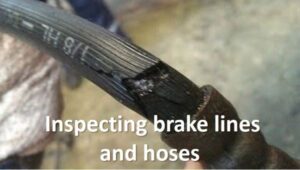Rack and pinion inspection
Rack and pinion inspection mean a detailed check of all elements from tie-rod ends, through the rack and pinion assembly to the control gear. A thorough inspection of the entire system is required to resolve the client’s complaint about difficult driving.
The rack and pinion system does not have a pitman arm, an idler arm, and a center link. It has a rack and pinion instead. That’s why the rack and pinion system has fewer places for wear, which are reduced to the ends of the ties. Carefully check the rack and pinion steering linkage for leaks, which can cause the pump to run out of steering fluid and become damaged.
Rack and pinion inspection
Inspecting the steering rack includes the ball joints, protective rubbers, tie ends, protective rubber bushings, internal tie-rod, rack connecting sleeves, mounting bolts, universal (Cardan) joints, and steering gear.
Ribbed rubber bellows boot protects the bar from contamination. If any cracks, splits, or leaks exist, the boot should be replaced. Also, be sure that the clamps for the bellows are in their proper place and fastened tightly.
Inspecting the outer tie-rod end means checking for damage, leaks, and looseness. Grab each end and rotate to feel for any roughness that would indicate internal rusting. Be sure to check for bent or damaged forgings and studs, split or damaged seals, and damaged, out-of-round, or loose taper ends. If any of these conditions exist, it is necessary to replace those parts.
To rack and pinion inspection, follow these steps:






